We have much more to do and your continued support is needed now more than ever.
Toxic Green Slime & Dead Fish as Far as the Eye Can See
A Visit to Southwest Florida in Crisis
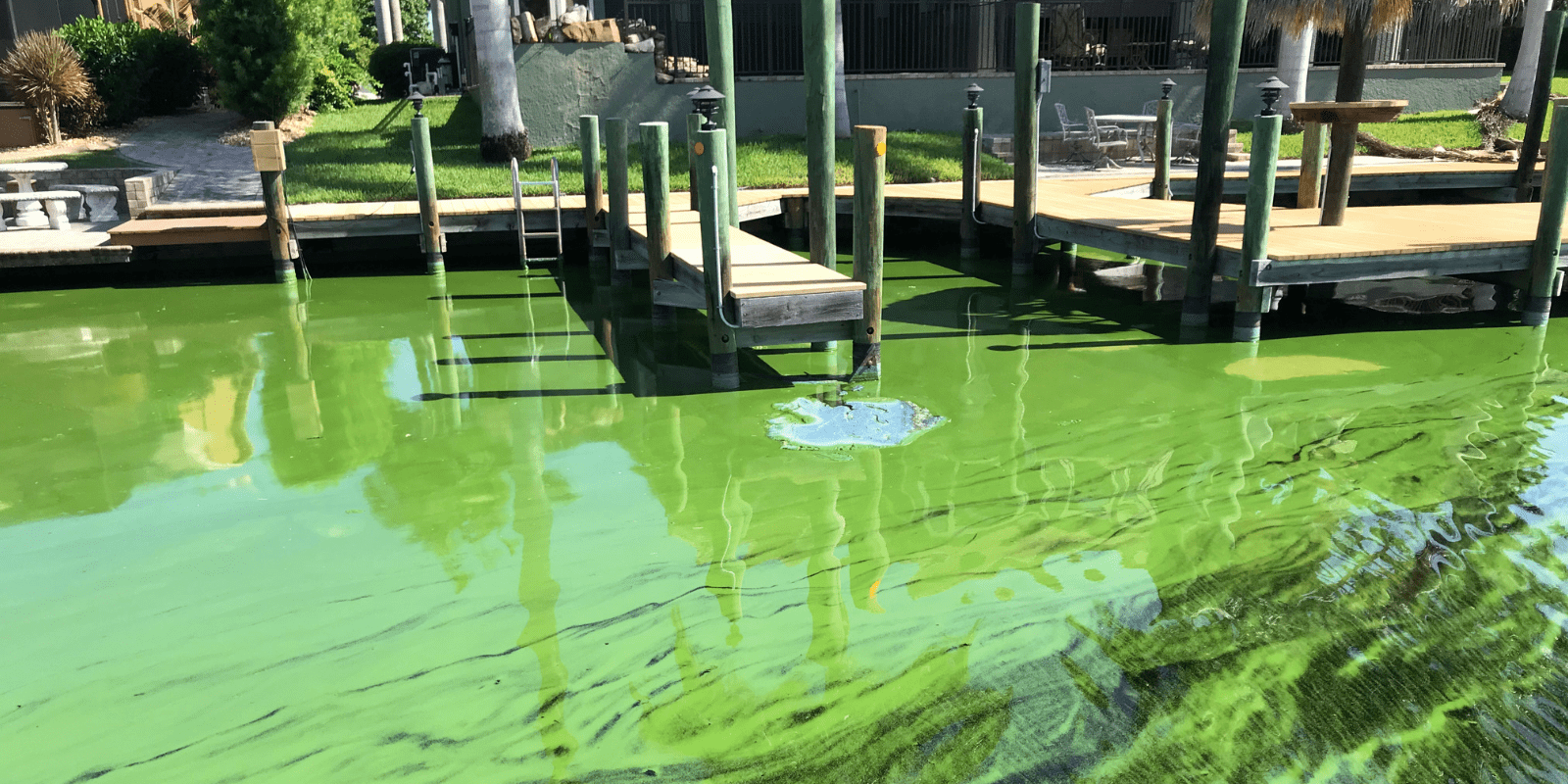
Southwest Florida is currently being hit not by one, but by two, massive outbreaks of toxic algae. It could take many years for these systems to fully recover.
The National Wildlife Federation’s president and CEO Collin O’Mara led a group of staff through some of the hardest hit areas. As long-time advocates for the Gulf of Mexico and the Everglades, we needed to see the devastation for ourselves.
Toxic Green Rivers
Rivers shouldn’t look like pea soup or guacamole, but that’s the current state of the Caloosahatchee near Fort Myers.
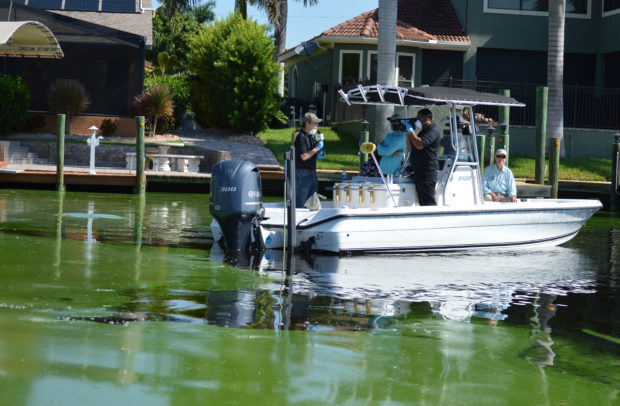
The overgrowth of blue-green algae is triggered by waters polluted by excessive phosphorus and nitrogen from septic tanks, lawns and especially from fertilizers used on agricultural fields. These nutrients effectively “fertilize” the blue-green algae in Lake Okeechobee, which then blooms out of control. Right now, Lake Okeechobee is almost entirely covered by outbreaks of blue-green algae.
This would be bad enough on its own, but the problem is compounded by the way we’ve re-plumbed Florida’s natural waterways. Freshwater once flowed naturally out of Lake Okeechobee south to the Everglades and ultimately to Florida Bay overland via the “River of Grass.” Today, we’ve blocked many of the natural routes for this water. Instead, the federal Army Corps sends large volumes of the polluted water directly to the east and west coasts, which triggers increasingly frequent algae outbreaks that slime beaches, hurt wildlife, damage the economy and may even affect human health.
A solution has been on the books for two decades. A planned storage and water treatment reservoir south of Lake Okeechobee would clean the water and allow it flow south to the Everglades and Florida Bay–two incredibly diverse ecosystems that are in crisis due to lack of freshwater.
The long-delayed restoration plan is supposed to be a fifty-fifty match between the Florida and Congress – which seems fair since the federal Army Corps actions created a good portion of the current problem decades ago. But while Florida has been fully funding its share of the restoration effort, Congress has recently been woefully underfunding its share of the restoration projects necessary to prevent toxic algae blooms.
Ask your members of Congress to stop toxic algae outbreaks in Florida by providing their share of funding for the Everglades reservoir!
Take ActionA Terrible Red Tide
Florida’s Gulf Coast is normally home to clear waters, abundant wildlife, and beautiful beaches. What we saw instead was horrific: Pine Island Sound was filled with dead, rotting fish as far as the eye could see. The waters were also full of uprooted seagrasses, an important habitat for many species of fish.
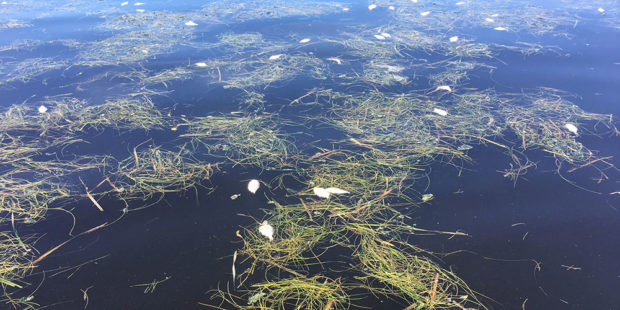
In this case, the problem is caused by “red tide,” or karenia brevis, an algae that produces neurotoxins capable of killing fish, birds and marine mammals. Massive red tides have occurred throughout the history of Florida, but scientists are saying these events may be becoming more frequent.
The current red tide event began last fall. But instead of petering out after a few months, as would be more typical, the red tide has stuck around through the summer. Scientists are investigating if the types of pollution that are fueling the blue-green algae outbreak upriver are also intensifying and prolonging this red tide. There is reason to think winds from Tropical Strom Gordon pushed the toxic algae further out in the Gulf, but it seems the storm will not be enough to permanently disperse the toxic red tide.
Another concern for scientists? Climate change. Warmer waters, higher levels of carbon in the air, and run-off from intense rainfall—all hallmarks of climate change—may also be putting toxic algae outbreaks on steroids nationwide.
Captain Zach Fischer‘s father was a well-known charter boat in Pine Island Sound. Today he and his brother are fishing guides on these same waters. He told us that he was concerned that his young son would not be able to join the family legacy when he grew up—that the bay itself would not support enough fish.
It’s really about future generations. It’s about the health of this bay, it is going to rebound and be healthy again? That’s my biggest concern … It’s scary.”
Helping Sickened Wildlife
Sanibel Island is home to the Ding Darling Wildlife Refuge. The refuge has special meaning for the National Wildlife Federation since it is named after our founder Jay Norwood “Ding” Darling, an editorial cartoonist and lifelong champion of wildlife conservation.
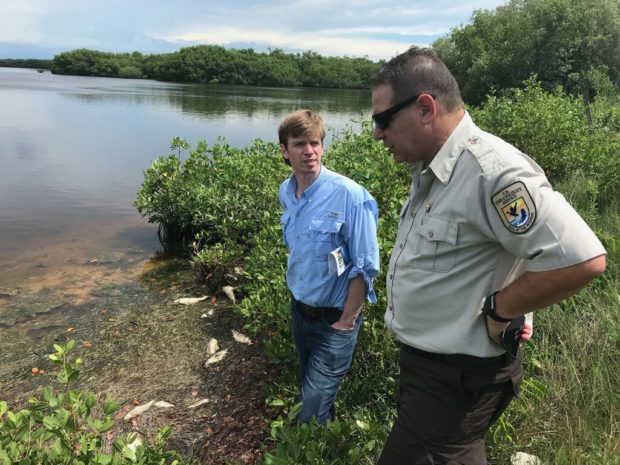
Sanibel Island is known for its incredible diversity of wildlife species that use its protected coastal inlets and pristine mangrove forests. But the island and its refuge have not escaped the red tide’s devastation. On our visit, the shores were littered with numerous dead, rotting fish.
Sanibel Island is also home to the Clinic for the Rehabilitation of Wildlife, an impressive veterinary facility that is currently rehabilitating several sea turtles and birds affected by red tide. CROW’s team of veterinarians and volunteers have been working long hours since the red tide began.
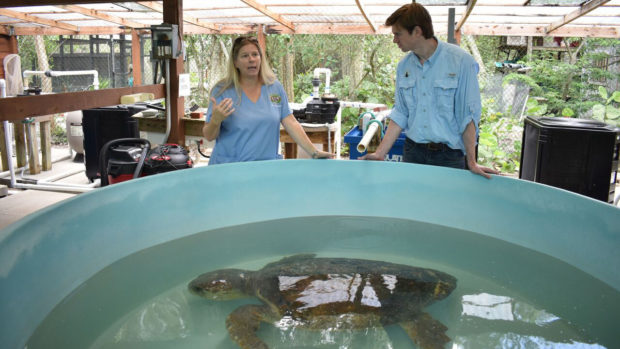
A Man-Made Crisis
Outbreaks of toxic algae are largely crises of our own making and there is much we can do to prevent them. Congress can take action right now to prevent future toxic algae outbreaks by fully matching Florida’s funding commitment to the long-overdue Everglades reservoir.





















